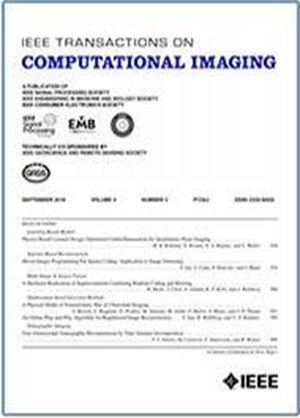Towards Multi-Source Illumination Color Constancy Through Physics-Based Rendering and Spectral Power Distribution Embedding
IF 4.8
2区 计算机科学
Q2 ENGINEERING, ELECTRICAL & ELECTRONIC
引用次数: 0
Abstract
Color constancy seeks to keep the perceived color of objects consistent under varying illumination conditions. However, existing methods often rely on restrictive prior assumptions or suffer from limited generalization capability, posing significant challenges in complex scenes with multiple light sources. In this paper, we propose a neural network-enhanced, physics-based approach to multi-illuminant color constancy that leverages spectral imaging—highly sensitive to illumination variation. First, we analyze the physical image-formation process under mixed lighting and introduce a master–subordinate illumination model, extending conventional correlated-color-temperature re-illumination techniques. Our neural network framework explicitly models the correlation between narrow-band spectral reflectance and the spectral power distribution (SPD) of the illumination, enabling accurate recovery of the scene light’s full SPD. Using this model, we fuse RGB images with the estimated illumination spectra to predict illuminant chromaticity precisely, then correct image colors to a standard reference light. Extensive experiments on synthetic multi–color-temperature datasets and real-world spectral datasets demonstrate that our neural network-based method achieves state-of-the-art accuracy in spectral estimation and color-constancy correction.基于物理渲染和光谱功率分布嵌入的多光源照明色彩恒常性研究
颜色恒常性是指在不同的照明条件下保持物体的感知颜色一致。然而,现有的方法往往依赖于限制性的先验假设或泛化能力有限,在多光源的复杂场景中提出了重大挑战。在本文中,我们提出了一种神经网络增强的、基于物理的多光源颜色恒常性方法,该方法利用光谱成像对照明变化高度敏感。首先,我们分析了混合光照下的物理成像过程,并引入了主从照明模型,扩展了传统的相关色温再照明技术。我们的神经网络框架明确地模拟了窄带光谱反射率与照明的光谱功率分布(SPD)之间的相关性,从而能够准确地恢复场景光的全SPD。利用该模型,我们将RGB图像与估计的照明光谱融合,精确预测光源色度,然后将图像颜色校正为标准参考光。在合成多色温数据集和真实光谱数据集上的大量实验表明,我们基于神经网络的方法在光谱估计和颜色常数校正方面达到了最先进的精度。
本文章由计算机程序翻译,如有差异,请以英文原文为准。
求助全文
约1分钟内获得全文
求助全文
来源期刊

IEEE Transactions on Computational Imaging
Mathematics-Computational Mathematics
CiteScore
8.20
自引率
7.40%
发文量
59
期刊介绍:
The IEEE Transactions on Computational Imaging will publish articles where computation plays an integral role in the image formation process. Papers will cover all areas of computational imaging ranging from fundamental theoretical methods to the latest innovative computational imaging system designs. Topics of interest will include advanced algorithms and mathematical techniques, model-based data inversion, methods for image and signal recovery from sparse and incomplete data, techniques for non-traditional sensing of image data, methods for dynamic information acquisition and extraction from imaging sensors, software and hardware for efficient computation in imaging systems, and highly novel imaging system design.
 求助内容:
求助内容: 应助结果提醒方式:
应助结果提醒方式:


